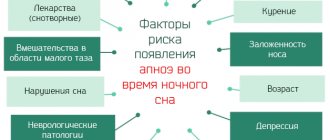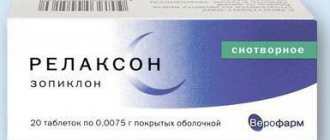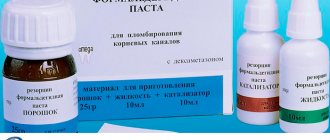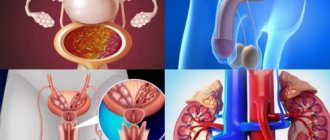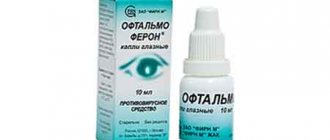Pharmacodynamics and pharmacokinetics
The drug belongs to the cyclopyrrolones . This is a sleeping pill. It acts as a specific receptor agonist. This medicine prolongs sleep, reduces the frequency of night awakenings, and improves sleep quality.
The drug is quickly absorbed. Time of administration, gender and number of doses do not affect absorption. The maximum concentration is reached after 90-120 minutes. Bioavailability – 80%.
The drug is quickly distributed from the vascular bed. The degree of binding to plasma proteins is approximately 45%.
The decrease in plasma concentration in the dosage range of 3.75–15 mg does not depend on the dose. The half-life is about 5 hours.
Imovan is metabolized in the liver to form metabolites : N-oxide and N-demethylated derivative . It is excreted mainly in the form of metabolites. Approximately 80% - with the kidneys, approximately 16% - with feces.
How does it affect the body? (Pharmacodynamics)
- The drug is a moderately strong sedative with a pronounced hypnotic effect.
- The main substance triggers the activation of GABAergic mechanisms of synaptic transmission in the brain. The half-life is 5.5–6 hours.
- Imovan is metabolized in the liver, forming N-oxide and N-demethylated derivative. Most of the metabolites are excreted in the urine.
- The substance is not metabolized in the tissues of internal organs (except the liver).
- Rapid absorption of the drug does not depend on the time of administration, the gender of the patient or the duration of the course. The maximum content of the drug in the blood is observed after 90-120 minutes.
- Even a single dose of the drug induces sleep with a normal phase structure, without provoking morning sickness and fatigue.
- The drug is approved for use by people with impaired renal function, and its withdrawal does not cause side effects.
- A course of taking a drug belonging to the cyclopyrrolones group improves sleep quality, reducing anxiety, the number of night awakenings and increasing the duration of the deep phase.
Side effects
Adverse reactions are individual in nature, they depend on the dosage and personal sensitivity of the person to the components of the drug. The most common side effect is a bitter taste in the mouth. In addition, the following reactions may occur:
- Cardiovascular system: sensation of heartbeat.
- Systemic effects: muscle hypotension, chills, sweating , asthenia , fatigue.
- Visual organs: diplopia , amblyopia .
- Gastrointestinal tract: coated tongue, dyspepsia , dry mouth, diarrhea , anorexia , bad breath, nausea, vomiting, constipation , increased appetite.
- Metabolism: weight loss.
- Skin: skin rash, sweating, toxic epidermal necrolysis , itching , Stevens-Johnson syndrome , erythema multiforme . If these symptoms occur, the drug should be stopped.
- Immune system: urticaria , anaphylactic reactions, angioedema .
- Respiratory system: dyspnea , shortness of breath .
- Musculoskeletal system: heaviness in the limbs, muscle weakness.
Laboratory tests may also rarely show an increase in transaminases and/or alkaline phosphatase levels.
In rare cases, seizures .
Elderly patients may experience rapid heartbeat, anorexia , restlessness, tremor , vomiting, sialorrhea , and a feeling of restlessness.
Clinical studies have documented cases of anger and behavioral disturbances that are caused by amnesia .
After discontinuation of the drug rebound insomnia , anxiety, increased sweating, confusion, palpitations, delirium , irritability, muscle pain, tremor , agitation , headache , tachycardia , and nightmares are possible. derealization , hyperacusis , increased sensitivity, depersonalization , numbness or tingling sensation in the extremities, and hallucinations may occur .
Indications for use:
The main conditions and diseases for which the drug is indicated are:
- sleep/wake disorder;
- insomnia;
- frequent and early awakenings;
- secondary sleep disorders in mental disorders.
- Adults are prescribed an appointment for situational, chronic and temporary sleep disorders.
Contraindications to prescribing and taking the drug may include:
- allergic reaction to any of the components of the composition;
- children under 15 years of age;
- pregnancy and breastfeeding.
The list of possible adverse reactions to taking Imovan:
- change in taste
- nausea,
- increased irritability,
- depressed state
- confusion,
- allergy,
- dizziness and lack of coordination.
In addition, some patients with an individual reaction to the drug may experience:
- cardiopalmus;
- muscle hypotension;
- chills;
- sweating;
- asthenic conditions;
- fatigue;
- from the visual organs - diplopia, amblyopia;
- manifestations of dyspepsia, dry mouth, diarrhea or constipation, weight loss, bad breath, nausea, vomiting, bullemia.
Indications for immediate discontinuation of use may include:
- skin rashes,
- toxic epidermal necrolysis,
- anaphylactic shock and Quincke's edema,
- Stevens-Johnson syndrome,
- erythema multiforme,
- rarely - convulsive syndrome, outbursts of anger and behavioral disturbances.
Cancellation may provoke
- rebound insomnia,
- anxiety,
- sweating,
- confusion,
- delirium,
- muscle pain and headaches,
- tremor,
- tachycardia,
- hallucinations and nightmares.
Do not take with drinks containing alcohol or other CNS inhibitors! The drug enhances their effect.
Instructions for use of Imovan (Method and dosage)
The course of use of the drug should be short-term if possible. The instructions for Imovan recommend taking it immediately before bed. Treatment for situational insomnia lasts 2-5 days, for temporary insomnia – 2-3 weeks. For chronic insomnia, the duration of the course is determined individually.
Instructions for use of Imovan indicate the following dosages:
- patients under 65 years of age – 7.5 mg per day;
- for patients over 65 years of age - an initial dosage of 3.75 mg per day, which is increased if necessary.
In case of problems with liver function and respiratory failure, the dosage is 3.75 mg per day.
Imovan: composition
The main component of the drug Imovan is zopiclone at a dosage of 7.5 milligrams. In addition, the tablet preparation contains in an optimal ratio:
- wheat starch;
- lactose;
- magnesium stearate;
- calcium hydrogen phosphate dihydrate;
- sodium starch fraction;
- hypromellose;
- titanium dioxide;
- polyethylene glycol.
The tablets are packaged in metallized blisters of 5 or 20 pieces, depending on the packaging option in each. In individual cardboard packaging - one blister. Each box of the medicine contains instructions for using Imovan on paper.
Overdose
Use of the drug in high doses can be life-threatening, especially when multiple CNS depressants (including alcohol) are used simultaneously.
The main manifestation of an overdose is depression of the central nervous system, which causes drowsiness or even coma . If the dose is slightly exceeded, confusion or lethargy may occur. High dosages can lead to ataxia , hypotension , respiratory depression, muscle hypotension , methemoglobinemia , and sometimes death.
If 60 minutes have not passed after the overdose, the patient can be induced to vomit; in other cases, gastric lavage is performed. In addition, it will be useful to take activated carbon in order to reduce the degree of absorption of the drug.
It is advisable to monitor the functioning of the cardiac and respiratory systems. of Flumazenil may help .
Hemodialysis is not advisable, since the active substance of the drug is characterized by a large volume of distribution.
Imovane®
The use of sedative (hypnotic) drugs, such as zopiclone, can lead to the development of physical and mental dependence or drug abuse.
The risk of developing dependence or abuse increases:
- with increasing dose and long-term treatment;
- abuse of alcohol (ethanol) and/or other medications;
- when used in combination with alcohol (ethanol) or other psychotropic substances or drugs.
If physical dependence occurs, abrupt cessation of treatment may cause the development of the “side effect” syndrome).
"Rebound" insomnia
In response to the abolition of treatment with sleeping pills, a temporary syndrome may develop when the symptoms that led to the need to prescribe sedative (hypnotic) drugs arise with increased severity.
Since the risk of developing this phenomenon is higher in case of abrupt withdrawal of zopiclone, especially after long-term treatment, it is necessary to reduce the dose of the drug gradually and inform the patient about the possibility of occurrence and measures to prevent the development of “rebound” insomnia.
Slipping effect
When using other sleeping pills, some loss of their effect may develop. However, when Imovan® was used for no more than 4 weeks, no escape effect of the drug was observed.
Amnesia
Anterograde amnesia may occur, especially when sleep is interrupted or after a significant period of time between taking the drug and going to bed. To reduce the risk of anterograde amnesia, you must:
- take the tablet immediately before going to bed at night;
- ensure sufficient sleep at night.
Depression
The drug is not indicated for the treatment of depression, and may even mask its symptoms.
Use in children
A safe and effective dose of zopiclone in children and adolescents under 18 years of age has not been established.
Other mental and paradoxical reactions
It is known that when using sedative/hypnotic drugs, such as zopiclone, paradoxical reactions occur (see section “Side Effects”), such as anxiety, agitation, irritability, aggression, delirium, anger, nightmares, hallucinations, inappropriate behavior and others behavioral side effects. If they occur, zopiclone should be discontinued. These reactions are more likely to occur in elderly patients.
Somnambulism and related behavior
Somnambulism and associated behaviors: sleepwalking and other associated behaviors, such as sleep-driving, preparing and eating food, talking on the phone with amnesia about what happened, have been described in patients using zopiclone and not completely awakened.
The use of alcohol (ethanol) and other CNS depressants with zopiclone appears to increase the risk of developing this disorder, similar to what occurs when zopiclone is used in doses exceeding the maximum recommended dose. If such behavioral disorders develop, it is strongly recommended to discontinue treatment with zopiclone.
Patients with respiratory problems
Since sleeping pills have the ability to inhibit the activity of the respiratory center of the brain, caution should be exercised when using zopiclone in patients with impaired respiratory function (see section “Side Effects”).
Interaction
You should not take drugs in combination with Imovan that have a depressant effect on the nervous system, namely: morphine , sedatives, antipsychotics, barbiturates, tranquilizers, clonidine , etc.
Taking concomitantly with Clozapine increases the likelihood of respiratory and cardiac arrest. In addition, during the course of treatment you should not drink alcohol or alcohol-containing products.
The combination of Imovan and Erythromycin causes an uncontrolled increase in the effect of zopiclone.
Imovan: reviews
I began to experience problems with sleep. My wife forbade me to take various pills like Zepam and its analogues. He says it might not be good. The doctor wrote a prescription for Imovan. Really good. A quarter of a tablet is enough for me to fall asleep in 15 minutes, and in the morning I feel great. Of course, I don’t drink every day.
I had problems falling asleep, mostly due to work. Because the schedule has moved. I used Domeril, a normal medicine, sold without a prescription, only after you wake up do you feel weak. Nowadays, on the recommendation of a good person, I sometimes drink Imovan when I just can’t fall asleep; half a tablet makes me fall asleep, I wake up with an alarm, I feel excellent after sleep. One drawback is that it is not available everywhere without a prescription.
A course of Imovan (sleeping pills) helped me, an ideal serious medication. Only a psychiatrist can prescribe it. By the way, it does not cause fatigue or drowsiness; after the allotted time in the morning, your eyes open easily and you easily wake up. Falling asleep is approximately the same - practically no unpleasant somnambulistic yawns of weakness. You just drink it and lie there, and you don’t want to sleep. In 10 minutes. You’re even worried that it didn’t have an effect, but after 15 minutes you’re already falling asleep. Eh, excellent stuff! Sometimes I need it when I can’t sleep)) But this is no longer clinical insomnia for me, but, in some cases, it happens to everyone. Does not cause addiction if you do not exceed the course period. On the contrary, it cures insomnia.
Analogues of Imovan
Level 4 ATX code matches:
Sonnat
Relaxon
Ivadal
Sanval
Zolpidem
Somnol
Andante
Zopiclone
The following analogues of Imovan are available in pharmacies:
- Zopiclone;
- Zopiclone-ZN;
- Normason;
- Piklon;
- Somnol;
- Sonnat;
- Sonovan.
Imovan (Zopiclone)
Zopiclone, a benzodiazepine-like drug, was initially presented as having a reduced risk of dependence and withdrawal symptoms compared with traditional benzodiazepine drugs. In reality, however, zopiclone may have an even slightly greater addiction potential than benzodiazepines. Tolerance to the effects of zopiclone may develop over several weeks. In most cases, long-term use of the drug should be avoided. Successful treatment of patients with severe insomnia due to anxiety can be achieved within a few months. Abrupt cessation of use, especially when taking high doses of the drug for a long time, can cause seizures and delirium in severe cases. Publications in the British Medical Journal provide no evidence that zopiclone has a low potential for addiction. In fact, physical dependence, abuse, and withdrawal symptoms similar to those observed with benzodiazepine withdrawal often occur with the drug. Symptoms of withdrawal syndrome include restlessness, tachycardia, tremors, sweating, hot flashes, palpitations, derealization, and later insomnia. Withdrawal seizures have also been reported during Zopiclone detoxification, however in this case the person was abusing high doses of Zopiclone. The risk of developing dependence when taking zopiclone for less than 2 weeks or less is very low. However, this is disputed by one study of low-dose zopiclone taken over 7 nights. Stopping zopiclone has been found to cause a relapse of insomnia. Additionally, when midazolam was discontinued after continuous use for 7 nights, no relapse of insomnia was observed, suggesting that zopiclone may cause more significant problems of tolerance and dependence than benzodiazepines. After 3 weeks of use, mild to moderate symptoms of relapse occur when zopiclone is stopped. Due to the risk of developing tolerance and physical dependence, zopiclone is recommended to be used for a short period of time (maximum 1-4 weeks), or, conversely, to rarely use the drug for long periods of time. Long-term users of Zopiclone who have become physically dependent on the drug should not abruptly stop taking the substance as severe withdrawal symptoms such as delirium may be associated with it. If zopiclone has been taken for several weeks or more, stopping the drug should be done by gradually reducing the dose or switching to an equivalent dose of diazepam (Valium), which has a much longer half-life, making withdrawal easier, and then gradually over several months. reduce the dosage to avoid the development of extremely severe and unpleasant withdrawal symptoms (such as internal restlessness, psychomotor agitation, abdominal pain, hypertension, hallucinations, seizures, anxiety, depression, psychosis, etc.), which can last up to two years if the drug is stopped too abruptly. After 4 weeks of using zopiclone at night, some users develop daytime anxiety associated with stopping the drug. This symptom, however, does not occur as intensely as with triazolam, which has a much shorter duration of action and produces more severe symptoms of daytime withdrawal anxiety in long-term users. According to the World Health Organization, Zopiclone, although not molecularly a benzodiazepine, is capable of binding non-selectively and with high affinity to the same benzodiazepine binding site as benzodiazepines. The World Health Organization has also stated that zopiclone is cross-tolerant with benzodiazepines and these drugs can replace each other. A World Health Organization review of zopiclone found that the onset of withdrawal symptoms tends to occur either with excessive drug abuse or with long-term use of zopiclone. Zopiclone withdrawal symptoms include anxiety, tachycardia, tremors, sweating, relapse of insomnia, derealization, seizures, palpitations and hot flashes. Zopiclone is cross-tolerant with benzodiazepines. Alcohol exhibits cross-tolerance with positive GABA receptor modulators such as benzodiazepines and non-benzodiazepines. For this reason, alcoholics or recovering alcoholics may be at increased risk of physical dependence on zopiclone. In addition, alcoholics and drug abusers may be at increased risk of abuse and/or psychological dependence on zopiclone. Patients with alcoholism, drug abuse, or physical or psychological dependence on sedatives should avoid taking Zopiclone. It is recommended that discontinuation of Zopiclone be done by switching to an equivalent dose of diazepam, as diazepam is available in low dosages, is cross-tolerant to zopiclone, and lasts longer than zopiclone, allowing for a smoother withdrawal and allowing the body to adjust to the constant dose. Although Zopiclone acts at the same benzodiazepine receptors as drugs in the benzodiazepine family, it is not classified as a benzodiazepine (although it shares a number of characteristics and effects with them) due to differences in molecular structure. Zopiclone is classified as a cyclopyrrolone derivative.
Imovana price, where to buy
People often ask on forums where to buy Imovan in Moscow, St. Petersburg and other Russian cities. The product can be obtained in the pharmacy chain with a doctor’s prescription, but it cannot be found in any online pharmacy, since it is dispensed only when prescribed by a specialist.
You can buy the medicine in pharmacies for approximately 250 rubles. In some cities, the price of Imovan may be lower.
In Ukraine, the product is more expensive. The average price of Imovan is approximately 100 hryvnia.
- Online pharmacies in KazakhstanKazakhstan
Imovan: analogues and their prices
The drug has several more affordable analogues that can be found in retail pharmacy chains. It is not possible to purchase Imovan - analogues will replace the drug, we are talking about drugs such as:
| Andante – Hungarian capsules produced by RICHTER, 5 and 10 mg. The active substance zaleplon has a pronounced hypnotic effect. Price – from 478 rubles. |
| Somnol - tablets from a Latvian pharmaceutical company, developed on the basis of zopiclonum. Prescribed to adults for the treatment of insomnia of various forms and etiologies, as well as sleep disorders. Price – from 228.4 rubles. |
| Sonovan is a domestic drug, the active substance of which is melatonin (its synthetic analogue). Available in tablet form. It has a sedative, adaptogenic and pronounced hypnotic effect. Price – from 416 rubles. |
